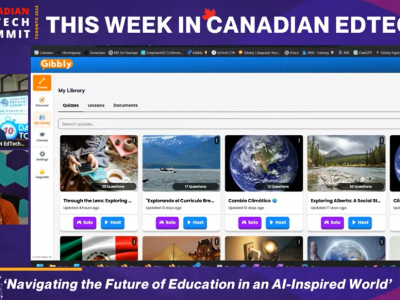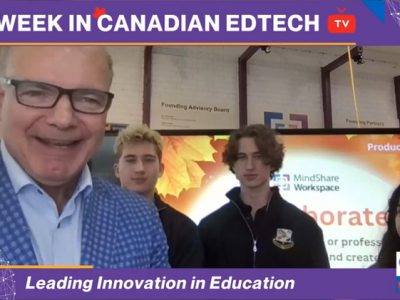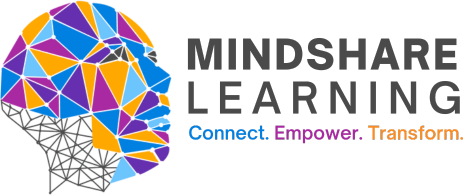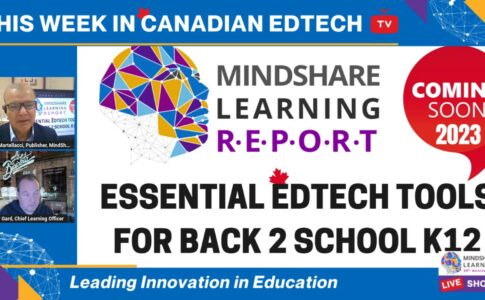 by Timothy Gard, TDSB Educator & MSL Report Contributing Writer
by Timothy Gard, TDSB Educator & MSL Report Contributing Writer
Technology is now becoming pervasive in more and more schools. Teachers are beginning to get the devices and the software to empower their teaching and student learning. Many teachers are using these tools to make an impact in the humanities and students are more engaged and enthusiastic about learning because they can use the devices that they are so very familiar with to do things that were not possible a short number of years ago. There are some caveats however and these involve the often very limited of using technology right across the curriculum. This is not a criticism but an encouragement.
No doubt teachers will use new devices and technology to inform their teaching in curriculum areas that they’re more comfortable in. That’s simply natural and to be expected. The real key to a more powerful use of technology in math is twofold: developing teacher capacity in math instruction that includes the use of technology, and developing a deeper and broader understanding of the capabilities of technology for math instruction and learning. This is not an overnight accomplishment but moving forward requires a commitment to actually take the risks necessary to engage the tools of technology to help teachers more effectively teach mathematics.
Real gains in teaching and learning can happen when we use the power of technology to meet the learning foci in mathematical processes. Let me outline some simple reminders about how school leaders might encourage the use of technology in teaching math, especially at the elementary level. These three simple ideas are in no way comprehensive; use them as a stepping stone to conversation with your staff, or as a reminder that the investment of both professional and monetary capital in technology means there should be some solid returns.
Use Your Technology Effectively in Math
Having the technology does not mean that the technology is being used effectively. And if you’re not using technology for math instruction and student learning then the time to begin is now. One resource and technology that pervades classrooms across North America is the interactive whiteboard, but I’m always amazed at how these devices are being used as ineffectively in a good many classrooms. The ‘interactive’ of interactive whiteboards is often ignored and students are left to watch a lesson – that may prove to be effective to some degree – that does not help them to develop a deeper understanding of mathematics. This begs the question of course. How does one use this technology to help develop a deeper understanding in mathematics learning? This is most definitely one resource that can be used much more effectively in a mathematics classroom.
The first thing that should happen is that the interactive whiteboard should be a piece of technology that is used by students frequently. It is not a passive tool. Allowing students to work collaboratively investigating mathematical processes can create a more synergistic atmosphere for math learning. Further, the tools that are built into the interactive whiteboard software are easily used, explored and deeper understanding and more challenging questions can be asked and modeled by both teachers and students using these tools. For an excellent starting point have a look at the TIPS Interactive Whiteboard material on Ontario’s Edugains website (another excellent resource for all-things-mathematics, among other things!). This material is middle and high school focused; it is well worth examining closely simply because it stands as a sterling example of how to use an IWB effectively for math instruction.
Interactive whiteboards also help to focus your mathematics environment on problem solving simply because of the way the ‘environment’ can be manipulated and made more dynamic quickly. Creating a problem solving mathematics environment using this technology is something where students can easily take charge of because they can be given the responsibility to manage the resource and focus on the tools to help them better understand the problem, and map out a strategy for solving the problem. This collaborative type of mathematics solving, and the showcasing of problem solving scenarios creates a rich context for enjoying mathematics, and oft neglected motivator for learning. Creating a context empowered by this one example of technology that is readily available helps to emphasize the fact that students need to feel empowered to build their own knowledge of mathematics in a shared environment where collaborative mathematics learning is encouraged and fostered by positive and powerful experiences using technology.
Moreover, unless you have created a community of IWB users at your school – and you should! – you and your team are missing out on sharing strategies, lessons and new ideas on how better to incorporate this technology. Teachers should be modeling this type of environment written about above by taking risks to share their own understanding of mathematics, and this can be more readily nurtured in an environment rich with relevant technology. Sharing formally and informally about the ways interactive whiteboards have impacted math in your mathematics program can shed further light on how to better design a responsive mathematics learning environment and not one that merely mirrors the passive model that we know all too well will not develop natural mathematicians.
Make Use of Adaptive Learning Resources
Adaptive learning software is fast becoming a powerful way to differentiate instruction so that all students’ needs are being addressed in mathematics. Further, with the advent of adaptive software teachers are better able to get reports and personalized assessment from the data generated by this software to better target specific learning needs. There is a way to go with this software however more and more evidence is showing that this software can and will make a real difference in student learning in mathematics. Several examples of this type of software are Dreambox and Prodigy. Another resource for reading about Adaptive Learning is on Knewton’s blog. Knewton is a huge force in adaptive learning and they have many partners to show their prowess in this field. Actually, this blog post is a great resource for many different topics in education.
One of the reasons Adaptive Learning resources are so powerful is because the learning comes in the form of problem solving, and the problem solving is engaging. That’s a good equation! If it involves problem solving and it’s fun, then what’s to fuss about! Make every effort to use these programs to enhance your students’ learning. It also means that students are going to make use of this learning outside of classroom. Giving students access to mathematical learning that is fun will only enhance their learning and deepen math outcomes. This does not mean that you should disregard good, solid teacher pedagogy in mathematics. This is a part of the whole, and used properly can create a more dynamic mathematics classroom.
Technology is a Powerful Way to Show Understanding
Having students show their understanding of what they’ve learning in mathematics can be enhanced used technology. This would include everything from virtual manipulatives to presentation programs to digital storytelling software. For several years now I’ve used a program called Pixie developed by Tech4Learning to have students show their understanding of a concept in math that we’ve investigated. Allowing students to showcase their solutions to problems and then talk about their reasoning, and reflecting about their responses better enable students to develop a deeper understanding of a concept or strategy they’ve used in mathematics. Students then often get into deeper discussions about their mathematical reasoning, and these discussions more often then not move them to re-think or re-develop solutions built on the feedback of their peers.
Using technology to show understanding also helps the teacher to ‘listen’ for the students understanding of a math problem. This can then enable the teacher to help correct misunderstandings in mathematical thinking and when this understanding is showcased in a larger audience the other students can reflect about their own solutions and understanding – this is parlayed by clearer and more imaginative ways to display mathematical processes in an open environment where exploration is encouraged.
Technology is most definitely an engaging way to help students and teachers create an authentic learning environment in mathematics. The few general ideas above should help you to think more deeply about how you might enable teachers at your school to better utilized technology to harness the innate potential of the students are your school to learning mathematics. At the very least it will create a broader discussion about how learning environments in mathematics should be practical and relevant to students so that they can make the very real connections to the mathematical world around them.
Timothy Gard









